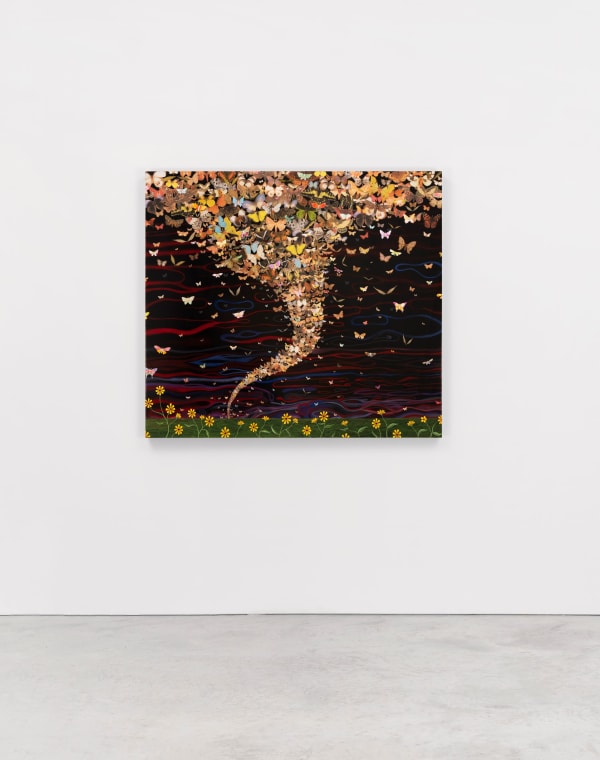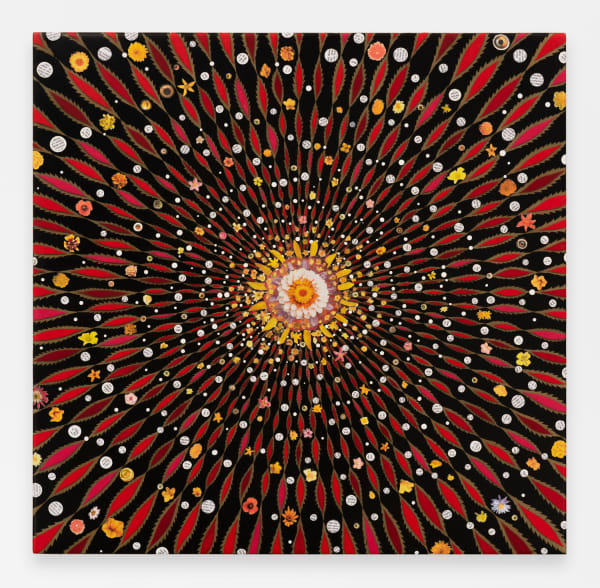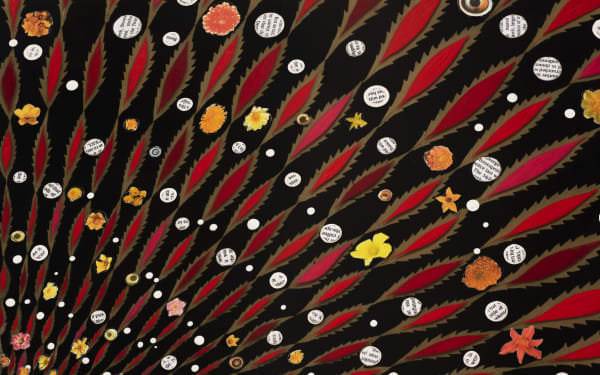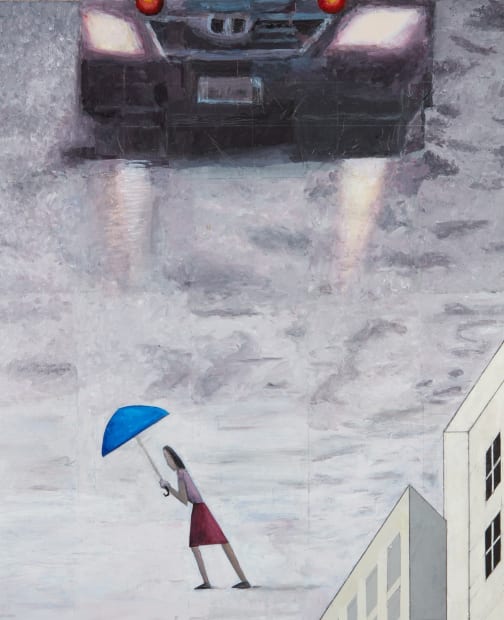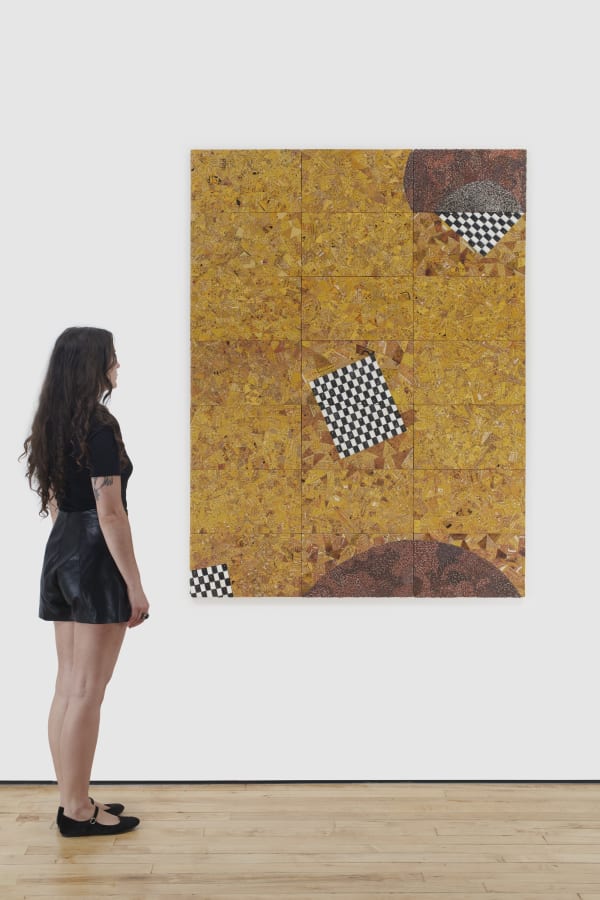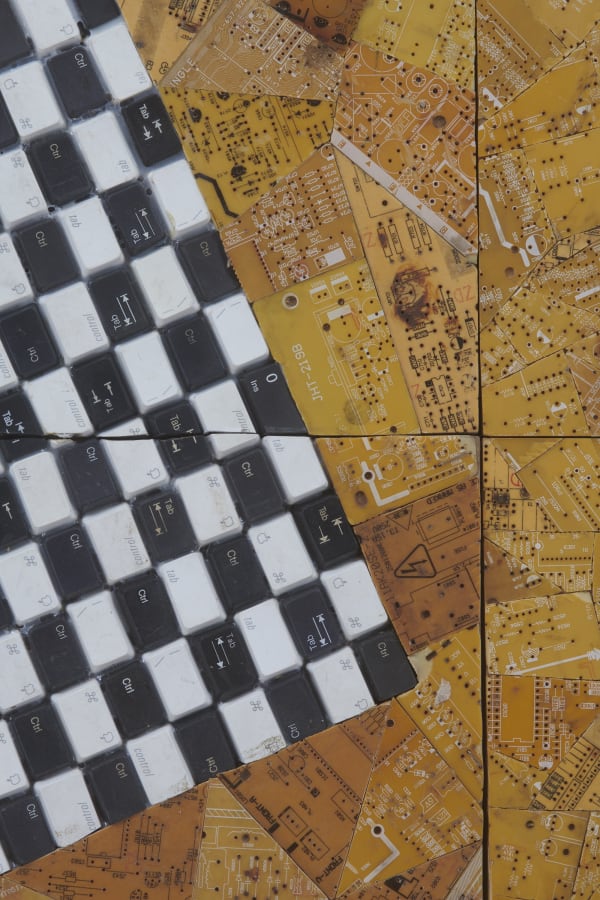-
For the 2022 edition of Art Basel, James Cohan will present a selection of new and important work by Simon Evans™, Spencer Finch, Yun-Fei Ji, Mernet Larsen, Josiah McElheny, Eamon Ore-Giron, Yinka Shonibare CBE, Elias Sime, Alison Elizabeth Taylor, and Fred Tomaselli. The fair is open to the public from June 16 to 19, with VIP Previews starting on June 13. In advance of the fair, preview a selection of available works in our Viewing Room.
-
Fred Tomaselli
-
Fred Tomaselli's interest in newsprint as material has become an extended exploration into the power of news media to shape and reshape our perceptions of reality. Conceptually, these fragments of media are similar to the psychoactive and psychedelic drugs he terms “reality modification devices.” The pharmaceutical materials that once filled his paintings are noticeably absent from his recent work, though the work has only become trippier.
-
Mernet Larsen
-
Combining reverse, isometric, and conventional perspectives, Mernet Larsen casts everyday scenarios into a vertigo-inducing version of reality akin to our own. In The Blue Umbrella, a lone figure traverses an urban street scene that plays with our understanding of what spaces are indoor, outdoor, above or below our protagonist. The ground the figure walks along can be read as pavement, "outer-space," or even sky.
-

-
Yun-Fei Ji
-

-

-
Simon Evans™
-
Incorporating layers of collaged paper, text and found items including detritus from their own home, the new work by Simon Evans™, This American Dollhouse II (a soft reboot), depicts the cross-section of a house, revealing the clutter, humor, and madness contained within. While certain objects point to the artists specifically, the doll house represents a universal experience: the daily and habitual patterns of life and domesticity, and our fraught relationship with material belongings.
-
Elias Sime
-
In his Tightrope series, Elias Sime deftly weaves, layers and assembles repurposed materials—computer keyboards, motherboards, and electrical wires—into abstract compositions that suggest topography, figuration, and sublime color fields. The history of his materials hold meaning, as they are the backbone of our modern communication systems, whether they be telephone or computer. The series title, Tightrope, acknowledges the uneasy balance between the advances made possible by technology and the impact they have had on our humanity and environment. They suggest the tenuousness of our interconnected world, alluding to the frictions between tradition and progress, human contact and social networks, nature and the man-made, and physical presence and the virtual.
-
Selected Works
Art Basel 2022
Past viewing_room
